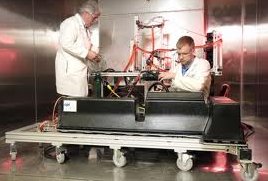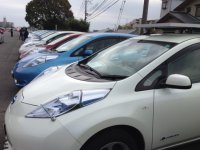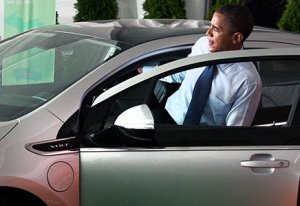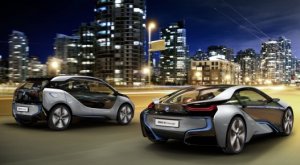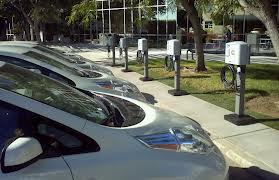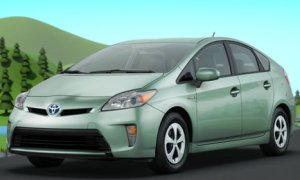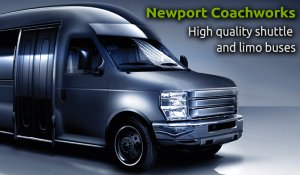 We’ve certainly seen quite a few startup OEMs and battery makers go belly up in the electric vehicle space in the past three years. To survive and thrive in this newfound industry, building reliable, high performance product, marketing and “messaging” in a way that resonates with the core audience, and having solid financials, are key ingredients.
We’ve certainly seen quite a few startup OEMs and battery makers go belly up in the electric vehicle space in the past three years. To survive and thrive in this newfound industry, building reliable, high performance product, marketing and “messaging” in a way that resonates with the core audience, and having solid financials, are key ingredients.
Green Automotive Company (GAC) is the holding company for three units – Liberty Electric Cars and GoinGreen in the UK and Newport Coachworks in the US. Ian Hobday, director of GAC, says the holding company has a business strategy of going “back to basics.” A steady cash flow is needed for EV makers, and each of GAC’s business units have revenue streams beyond EVs. “You can’t have 100 percent of your focus on EVs,” he said. “The volume’s not strong enough yet.”
His initial company, Liberty Electric Cars, was acquired last year by GAC and brings about eight years of experience in the European market to the table. It’s been delivering electric vehicles to customers in Europe for several years, and has other diverse offerings on the market including all Electric Range Rover conversions.
In November, Newport Coachworks will start building electric shuttle buses at its production facility in Riverside, Calif. The Newport Coachworks team has been in the bus market for years and was recently acquired by GAC. While most of the buses in chauffeured transportation tend to be converted from Ford E450 or F550 platforms, Newport Coachworks will be building its own electric buses from the ground up. Newport is tapping into Liberty’s experience delivering electric vehicles to parcel delivery and postal fleets, and to plumbers, gardeners, decorators, and other business customers. The shuttle bus is powered by an 80 kilowatt battery pack that goes about 100 miles on a charge; the A/C unit doesn’t need extra power during the trips as it has its own source, Hobday said.
What GAC is finding out is that customers appreciate the cost per mile differential with electrics buses – 14.5 cents per mile for typical shuttle buses and 2.5 cents per mile for electric shuttles. Drivers also love the fact that the electric bus has no vibration or noise – they feel more relaxed while doing their jobs, Hobday said.
A number of clients have been using GAC’s drivetrains in their own vehicles, including OEMs in Europe. They’ve also been accessing the Liberty E-Care service offering, which provides service and support for EVs already on the road, from trained and skilled technicians equipped with customized diagnostic tools.
GAC found California to be a smart place to launch its electric shuttle buses in the US market. It’s the largest market so far in the US for electric vehicles, and there’s incentives and support for the technology within the state. The company is also focused on getting as close to 100% as possible in using American parts and labor in its vehicles. GAC has been working with manufacturers of lithium ion battery cell makers such as Dow Kokam on its electric Range Rovers. GAC wants access to inherently safe, high energy density cells from US suppliers. “Why go to China? It’s much cheaper, but the failure rate is higher,” Hobday said.
GoinGreen is GAC’s retailer network in the UK. It offers a wide gamut of EV products – city buses, bikes, scooters, and city cars. It will be coming to California then launching a global rollout. As GAC acquired Liberty and GoinGreen, the idea was to consolidate operations, reach economies of scale, and to cover all the basics – from manufacturing electric powertrains and conversions, servicing the vehicles, and expanding retail store fronts. GAC serves the internal combustion engine sector, as well. As GAC and other thriving players in the EV market (i.e., Tesla Motors) know very well, good solid profits are required for EV makers to survive and thrive.
 The German auto show is going full steam ahead and has been getting plentiful media coverage describing electrified vehicles as the central theme. There certainly have been a lot of displays, but the typical question arises – how much of this will really reach production lines, what will the volume look like, and when will they show up at dealer lots? Here’s a few highlights from last week…
The German auto show is going full steam ahead and has been getting plentiful media coverage describing electrified vehicles as the central theme. There certainly have been a lot of displays, but the typical question arises – how much of this will really reach production lines, what will the volume look like, and when will they show up at dealer lots? Here’s a few highlights from last week…
